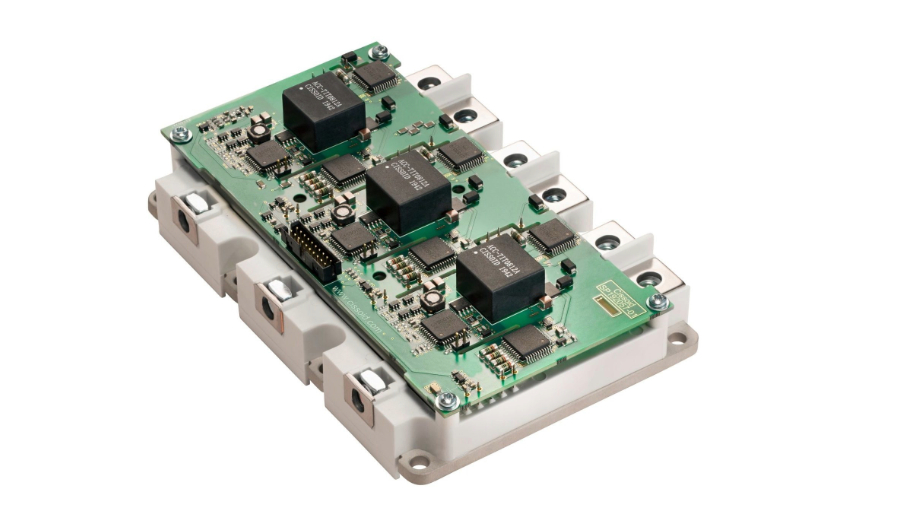Advancements in Power Electronics: SiC MOSFETs and PIMs
In the realm of power electronics, continuous advancements play a pivotal role in enhancing the efficiency, reliability, and overall performance of electronic systems. Two significant technological breakthroughs that have garnered widespread attention are Silicon Carbide Metal-Oxide-Semiconductor Field-Effect Transistors (SiC MOSFETs) and Power Integrated Modules (PIMs). These innovations represent a paradigm shift in power electronics, offering solutions to address the escalating demand for higher power density, improved energy efficiency, and enhanced system robustness.
SiC MOSFETs have emerged as a transformative technology, replacing traditional silicon-based devices in various power electronic applications. Silicon Carbide, with its superior material properties, enables SiC MOSFETs to operate at higher temperatures and voltages, resulting in reduced power losses and increased power density. This not only contributes to improved energy efficiency but also facilitates the design of more compact and lightweight electronic systems.
On the other hand, Power Integrated Modules (PIMs) represent a holistic approach to power electronics integration. PIMs consolidate multiple power components, such as insulated gate bipolar transistors (IGBTs), diodes, and gate drivers, into a single module. This integration not only simplifies the design and assembly process but also enhances reliability by minimizing interconnection issues. PIMs offer a scalable and modular solution, catering to diverse power requirements across various applications, from renewable energy systems to industrial motor drives.
As we delve into the intricacies of SiC MOSFETs and PIMs, it becomes evident that these advancements are shaping the landscape of power electronics, and fostering innovation across industries. This exploration will delve into the fundamental principles, advantages, and applications of SiC MOSFETs and PIMs, unraveling the transformative potential they hold in revolutionizing electronic systems and contributing to a sustainable and energy-efficient future.
SiC MOSFETs
Silicon Carbide, a wide-bandgap semiconductor material, has revolutionized power electronics with its unique properties. SiC MOSFETs, in particular, have gained prominence due to their superior performance compared to traditional silicon-based devices. Some key features include:
High Thermal Conductivity
SiC’s excellent thermal conductivity allows for efficient heat dissipation, enabling SiC MOSFETs to operate at higher temperatures without compromising performance. This characteristic contributes to increased power density and reliability.
High Breakdown Voltage
SiC MOSFETs exhibit higher breakdown voltages than their silicon counterparts, making them suitable for applications that require elevated voltage levels. This feature is crucial for power systems with demanding specifications.
Low On-Resistance
The on-resistance of SiC MOSFETs is significantly lower than that of traditional silicon devices. This low on-resistance results in reduced conduction losses, improving overall energy efficiency and system performance.
High Switching Speeds
SiC MOSFETs can switch at much higher frequencies compared to silicon devices. This characteristic is advantageous in applications such as power converters and inverters, where fast switching times are essential for minimizing losses.
Applications of SiC MOSFETs
SiC MOSFETs find applications across various industries, including:
Electric Vehicles (EVs)
SiC MOSFETs contribute to the development of high-efficiency power converters and motor drives in electric vehicles, extending their range and reducing charging times.
Renewable Energy Systems
The high efficiency and power density of SiC MOSFETs make them suitable for use in solar inverters and wind power converters, optimizing energy production and distribution.
Industrial Power Supplies
SiC MOSFETs enhance the performance of industrial power supplies, enabling more compact and energy-efficient designs.
Passive Intermodulation (PIM) Devices
PIM devices play a crucial role in maintaining the integrity of communication systems, particularly in wireless networks. PIM occurs when non-linear elements within a communication system generate unwanted signals that interfere with the primary signals. PIM devices are designed to mitigate this interference and enhance overall system performance.
Key Characteristics of PIM Devices
Low Intermodulation Distortion
PIM devices are engineered to minimize intermodulation distortion, ensuring that additional unwanted signals are kept at a minimum. This characteristic is vital for maintaining signal clarity and integrity.
Wide Frequency Bandwidth
PIM devices operate across a broad frequency range, making them versatile and suitable for various communication systems, including cellular networks and satellite communication.
High Power Handling Capacity
To withstand the power levels in communication systems, PIM devices are designed with high power handling capacities, ensuring robust and reliable performance.
Applications of PIM Devices
Wireless Communication Networks
PIM devices are integral to maintaining signal quality in wireless communication networks, preventing interference and signal degradation.
Satellite Communication Systems
In satellite communication, where signal integrity is paramount, PIM devices contribute to minimizing unwanted intermodulation distortion and ensuring reliable data transmission.
SiC MOSFETs and PIM devices represent cutting-edge advancements in power electronics and communication systems, respectively. SiC MOSFETs offer superior performance, efficiency, and reliability, making them indispensable in various applications, from electric vehicles to renewable energy systems. On the other hand, PIM devices play a crucial role in maintaining the clarity and integrity of signals in wireless communication networks and satellite systems. As technology continues to evolve, these innovations contribute significantly to the development of more efficient and reliable electronic systems, shaping the future of power electronics and communication technologies.
Source

